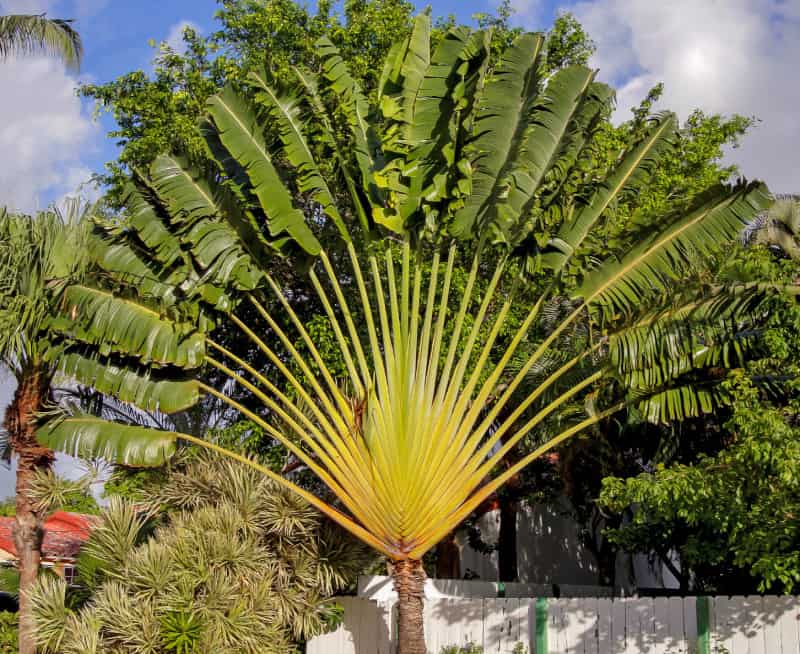Traveller’s Palm Facts
- The Traveller’s Palm or Ravenala constitutes a unique type of plant endemic solely to the island of Madagascar. Yet, the problem remains, however, that the species is uniquely not even a true palm.
- The ravenala is actually a member of a flowering plant family which also appears closely related to the Bird of Paradise flower.
- The large and rather uniquely shaped fan formed atop the Traveller’s Palm actually tends to grow in a way aligned with approximate east to west.
- This literally makes it a crude, living compass, as a result. Hence the origin of the unique name. Imagine having a living compass to guide your travels.
Related Articles
Traveller’s Palm Physical Description
The Traveller’s Palm represents a form of monocotyledonous (now that makes a mouthful) flowering plant. There exist four known varieties of this species.
The varieties attain an average height of about 23 ft (7 m). However, some individuals may also grow much larger under ideal circumstances.
The leaves grow quite large and rather sturdy, as well as roughly paddle-shaped. There are also numerous large sheaths, which tend to hold rainwater.
The flowers of the Traveller’s Palm also develop large and primarily white with a blending of other colors. These, again, bear a strong resemblance to those of the closely related Bird of Paradise flower.
- Kingdom: Plantae
- Phylum: Angiosperms
- Class: Monocots
- Order: Zingiberales
- Family: Strelitziaceae
- Genus: Ravenala
- Species: R. madagascariensis
Traveller’s Palm Ecological Uniqueness
The Traveller’s Palm also plays an important role in its environment. The brackish water accumulated within its sheaths is unfit for human consumption. However, it provides a needed resource for animals and insects.
This unique plant has evolved an incredible inter-dependency with ruffed lemurs, native to the same region. The animal, which feeds primarily on the Traveller’s Palm, serves as the primary pollinator of the palm.
Though restricted to Madagascar, the plant grows equally well in all habitats within that range.
This interesting plant is a dioecious species. Male trees also produce a single trunk, while female trees often produce multiple trunks.
Species Sharing Its Range
Check out our other articles on 7 Splendid Canary Islands Species, Wilson’s Bird-of-paradise, Macquarie Island, Ohlone Tiger Beetle, Snowshoe Hare, Purple Frog, Rosy Veincap, Gila Monster

